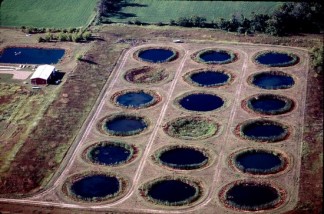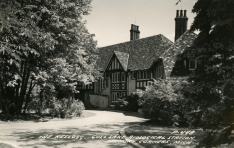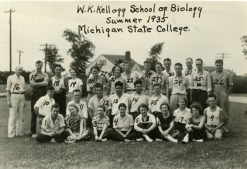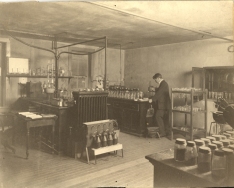Michigan State University has an extensive history of agricultural excellence, which makes sense for a school that was founded as the Michigan Agricultural College. The men and women of the various horticulture, natural resources, agriculture, entomology, and dairying departments at MSU have long been pioneers in their respective fields and have contributed to today’s practice of agriculture in ways many of us non-farmers cannot even grasp.
Currently, MSU has 13 off-campus research facilities spread throughout the state, studying topics ranging across a variety of fields. The W.K. Kellogg Biological Station is one of the oldest of these programs and has been noted as one of the premier institutions of its kind. This particular station is managed by MSU’s College of Agriculture and Natural Resources, and its self-stated research focus is on ecology and evolutionary biology and the applications to sustainable agriculture and conservation. W.K. Kellogg himself was passionate about conservation, and was responsible for the Biological Station’s beginning. In 1926, Kellogg began the construction of a large manor house on Gull Lake, near Battle Creek. A year after the estate’s completion, he also constructed the site’s first bird sanctuary, which, as researchers would later find out, happened to be at the crossroads of three major bird migration routes.
As early as 1930, Kellogg donated an adjoining 1500-acre land tract to MSU for the purpose of research, and so began the first ten years of summer study at the estate under the direction of the School of Biology and Joseph W. Stack from the Zoology department. The property was briefly used as an army rehabilitation hospital for a number of years following, until Kellogg’s death in 1951. At his death, Kellogg bequeathed to MSU the 39-room manor house, guesthouse, 6-car garage, chauffer’s lodgings, and a greenhouse, as well as $45,000 for equipment and remodeling. MSU turned the property into a research station like none other. Today, the area is made up of 4,065 acres of bird sanctuary, farms, biological labs, artificial ponds, a conference center, extension and outreach facilities, and other reserves.

The image above is an aerial view of the 18 artificial lakes built at the Biological Station for research purposes.
The Kellogg Biological Station is considered to be so unique because of the ability researchers have to study such diverse and large-scale habitats and systems: wetlands, streams and rivers, lakes, forests and fields, geology and soils, land use and agriculture. The site is useful because of the level of control researchers have; some of the areas range from almost wild forest to heavily managed agriculture, and the geographic area itself is interesting because of its history of glacial activity that formed the tills, plains, and lakes around the grounds. These lakes are another source of academic research of their own, where students can study morphology, water composition, and productivity. The more developed agricultural areas allow for the study of common crops and their sustainability. In fact, the Kellogg Station was the first facility in the US to receive a Leadership in Energy and Environmental Design Silver certification for their work in conservation and sustainability.
The Biological Station has been a leader in agricultural education since it opened, publishing hundreds of bulletins concerning every agricultural problem imaginable: fertilizing, infectious diseases, soil types, insects, water quality, farm management… the list goes on and on, and the program shows no signs of slowing down. Today the station has programs for graduate students, undergraduates, kid’s summer camps, internships, research apprenticeships, guest lecturers, and seminars, and the grounds are available for nonacademic purposes as well. Check out their website here for more information.





